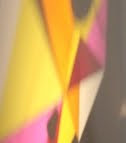when treehouses become cages...

when i first started buying photos, i looked at the subject and the overall mood, but i generally paid little attention to the background. the nice thing was that once i got home i would discover other things, incidentally or accidentally captured in the background... a street sign, a ghost image, a person, an object, etc.
nowadays, i usually scour the background of images pretty thoroughly at first approach, because there's always a chance i'll discover something more interesting than the central subject...
the above is a pretty nice picture of a band, probably from around 1890. the band and the instruments are great, but i was struck much more by the treehouse in the background. the form reminds me of german expressionist architects' drawings, and the forms of bruno taut. the two triangle forms, forming a square seem right out of alexander girard's vocabulary. the repeated curved elements of bent wood, just totally amazing and evoking that great painting by manet (even though manet's balcony railing forms are totally different)... this is folk art at its highest outsider homespun form.
if you look at the detail, you can see a little child hiding within what now becomes a cage (in a strange connection, in manet's balconly painting there is a little dog hiding in one corner). the deep dark serious eyes have the child looking very much like he was transported here from a 70's italian horror film (or perhaps as the reincarnated anger of manet's little dog). the blurred edges of the blankets make them seem like animal skins, and the atmosphere evokes a kind of tribal poetic darkness... is the youngster the king or the captured.
if one looks again at the band, you begin to wonder about the expressions on their faces. they don't look as happy as they did before you noticed the kid... in fact they look downright uncomfortable and slightly unsure...
for me, it's the beauty of not knowing the truths in these photos, that allows me to engage with them in so many different ways. in many cases their truths are, of course, unknown to me; and similarly, their subjects have no personal connection to my own family history. there is no baggage from overwhelming memories of a subject, so it is possible to enter an image from so many different vantage points - not only through eyes, but emotionally as well as the thinking mind.
the unintentional emptiness of specific known histories, allows them to exist as pure images, leaving the determination of life stories, value, and meanings to be brought to the table by any viewer. each captured single moment of stillness contains a wealth of possible narratives (both leading up to their moment of capture, as well as what might have come after), and allows one to continually be immersed in these tiny pictured worlds.
Labels: alexander girard, background, bands, bruno taut, tree houses


1 Comments:
What an amazing image to find amidst the background! That boy definitely has the aura of some “70s Italian horror film” or even one of the children in a story by Henry James, but I first noticed the ghostly white swirls (blankets hadn’t come to mind, yet) around the boy, which seem a bit different than the usual long exposure traces and kind of remind me of the way Tarkovsky uses material that is strung (or flung) quickly across the scene between people (The Mirror), and which creates a kind of otherworldly atmosphere… That's exactly what I love about saving prints that have been separated from their text - the areas apart from the original story, the abstractions...
Post a Comment
<< Home